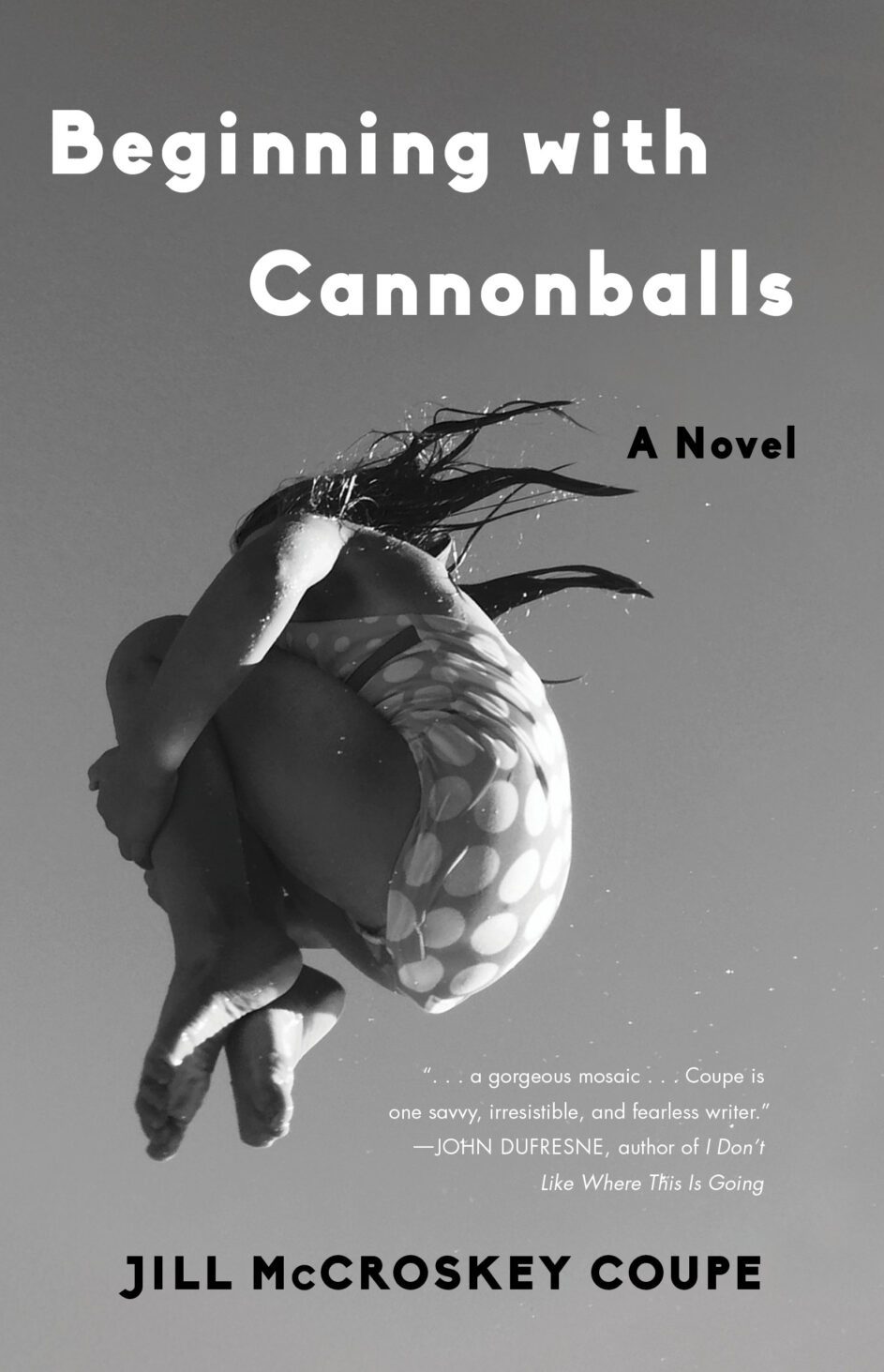In one of the niftiest scene-setting leads in any book ever, page one of “Beginning with Cannonballs” takes the reader to a backyard swimming pool in West Knoxville on a hot summer day in 1951. Two little girls – Gail and Hanna – are perfecting the art of the cannonball.
Hanna’s mother, Sophie, is keeping an eye on them as they leap off the diving board over and over again, chanting Billie Holliday lyrics as they tuck their knees and launch themselves skyward – the bigger the splash the better. Gail is white. Hanna and Sophie are black. The unnamed neighborhood sounds a lot like Sequoyah Hills.

Jill McCroskey Coupe
Gail’s father is a lawyer, her mother a professor. Sophie is their live-in housekeeper. She has worked for Charles and Bessie Madison since the days when Gail and Hannah were infants sharing the same crib. Despite the fact that they attend separate, strictly segregated schools and churches, the girls are BFFs – a term that hadn’t yet been coined in the ’50s but is exactly what they were, mostly due to Gail’s relentless determination to keep the relationship intact, even after Sophie and Hanna move away and the girls grow into young adulthood and beyond.
The girls would have been contemporaries of author Jill McCroskey Coupe, a 1961 graduate of West High School, who was born the same year as another Knoxville native, poet Nikki Giovanni. Their paths never crossed in their segregated home town (Coupe is white; Giovanni is black), but Coupe, whose father ran a downtown printing business, is an admirer of Giovanni and always wondered what it would have been like to have been allowed to know people of a different race. She doesn’t explicitly say so, but it’s an implicit thread throughout the book. She talked about the inspiration for this novel in a recent interview with Southern Literary Review:
“I grew up in Knoxville, Tennessee, at a time when racial segregation was so complete – neighborhoods, schools, hospitals – that I rarely saw a black child. A friendship like Hanna and Gail’s would have been extremely rare. In trying to imagine a scenario in which a white girl and a black girl could have met and become friends, I came up with the idea of a live-in maid whose daughter lived in with her. I thought of the novel as a “what-if?” story. What if, during those days of racial segregation, a white girl and a black girl had been able to become friends? Would the friendship have lasted?”
“Cannonballs” is a short (223 pages), episodic yarn that packs in cultural symbolism and unexpected plot twists as it follows Gail and Hanna through the years. Its last chapter, set many decades later, features Gail, Hanna, Sophie and Bessie (always “Miss” Bessie to Sophie due to the force of ancient habit). They’ve long since left Knoxville behind and have taken a road trip down the Jefferson Davis Highway near Richmond, Virginia. When they start looking for a place to eat, they are irresistibly drawn to the Cannonball Grille – the kind of inside joke only understood by the oldest of friends.
Coupe lives in Baltimore and was a librarian at Johns Hopkins University. “Beginning with Cannonballs” was published this year by She Writes Press and is available in Kindle or paperback at Amazon, Barnes and Noble and other booksellers.
Betty Bean writes a Thursday column for KnoxTNToday.com.

